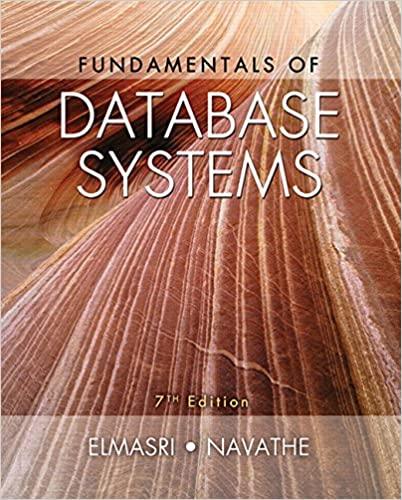Consider the following decompositions for the relation schema R of Exercise 14.24. Determine whether each decomposition has
Question:
Consider the following decompositions for the relation schema R of Exercise 14.24. Determine whether each decomposition has
(1) The dependency preservation property, and
(2) The lossless join property, with respect to F. Also determine which normal form each relation in the decomposition is in.
a. D1 = {R1, R2, R3, R4, R5}; R1 = {A, B, C}, R2 = {A, D, E}, R3 = {B, F}, R4 = {F, G, H}, R5 = {D, I, J}
b. D2 = {R1, R2, R3}; R1 = {A, B, C, D, E}, R2 = {B, F, G, H}, R3 = {D, I, J}
c. D3 = {R1, R2, R3, R4, R5}; R1 = {A, B, C, D}, R2 = {D, E}, R3 = {B, F}, R4 = {F, G, H}, R5 = {D, I, J}
Exercise 14.24
Consider the universal relation R = {A, B, C, D, E, F, G, H, I, J} and the set of functional dependencies F = {{A, B}→{C}, {A}→{D, E}, {B}→{F}, {F}→{G, H}, {D}→{I, J}}. What is the key for R? Decompose R into 2NF and then 3NF relations.
Step by Step Answer:

Fundamentals Of Database Systems
ISBN: 9780133970777
7th Edition
Authors: Ramez Elmasri, Shamkant Navathe





